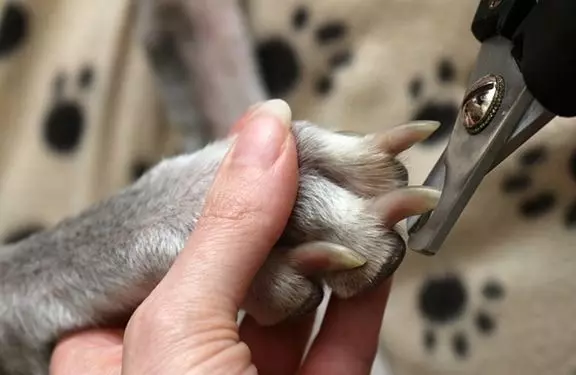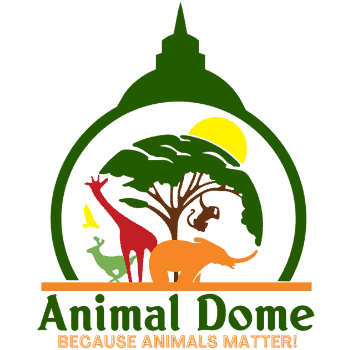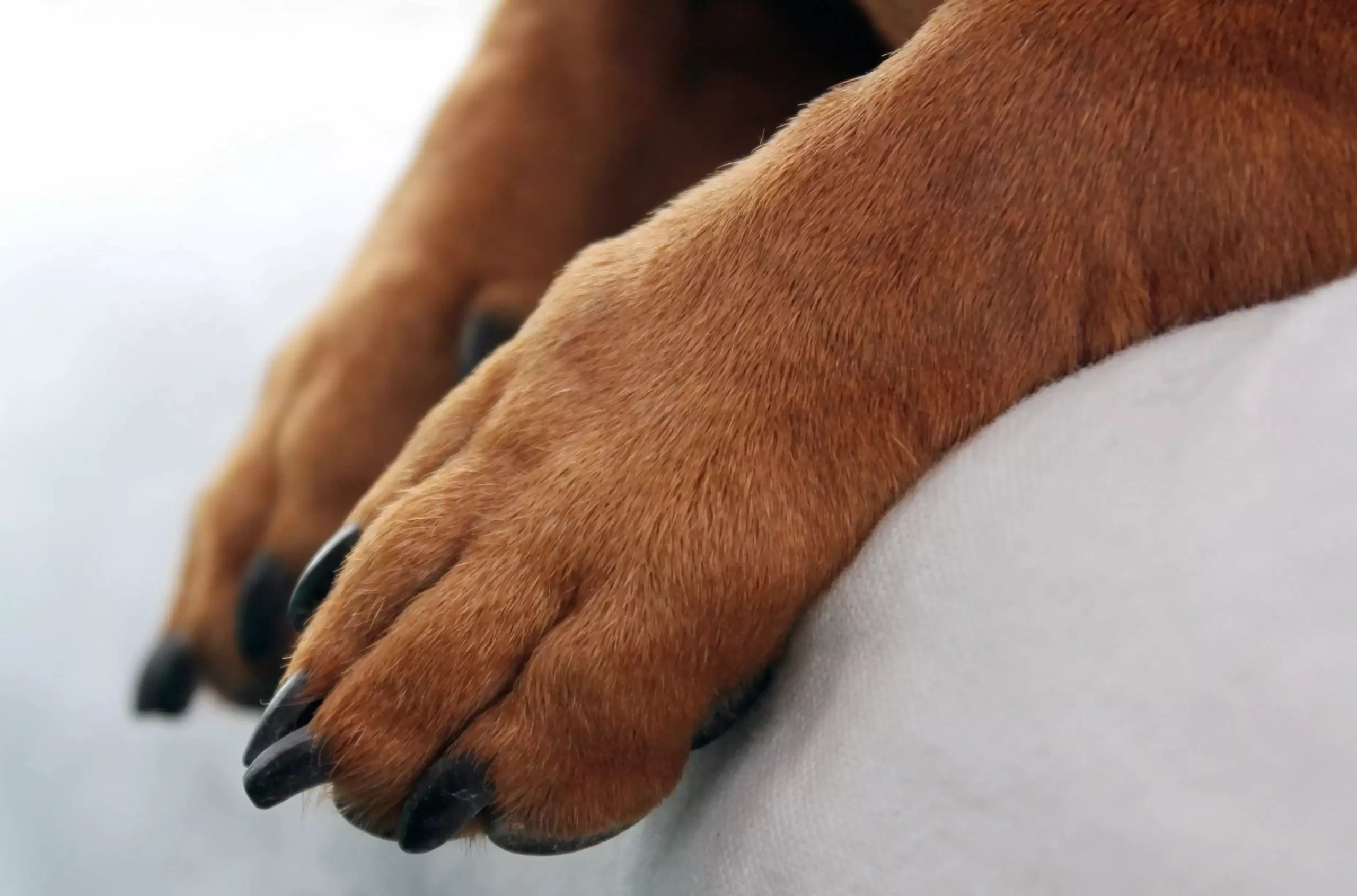Is your Great Dane suffering from weak and flat feet? While feet support the whole body and Great Danes have gigantic bodies. If their feet are weak or flat, it’s a severe issue because these dogs are already prone to joint disease, hip dysplasia, and more bone diseases. Feet development is essential in Great Danes, especially in puppies. Sometimes improper growth leads to knuckling in Great Dane puppies.
  But weak joints and poor structure cause severe pain, permanent joint injury, and arthritis in adult Great Danes. Don’t worry; you can strengthen your Great Dane feet by different steps such as giving a nutritional diet, proper exercise, trimming the nails, etc. So, in this article, we’ll go through how to strengthen your Great Dane’s feet. Keep reading!
Is Genetics Roles Foot Structure in Great Danes?
  Genetics play a vital role in the overall structure of Great Danes, such as body shape, color, feet, etc. According to the illustrated standard, the Great Dane’s feet must be parallel and straight while viewing from the front. The feet must be well-knuckled. Also, the Great Dane’s pastern curve should be 8 degrees.
If your Dane has splayed toes, east-west feet, and bone abnormality, these are considered faults. The illustrated standard is formed on establishing a proper structure for Great Danes. They require structure correctly for long life, comfort, movement, and overall health.
  Also, genetics definitely play a role if your Great Danes have “turnout” feet. Incorrect feet and joints are also caused due to damaged growth plate which is known as Angular Limb Deformities. This condition is cured by surgery. Also, always consult your veterinarian first.
Some of these Great Danes are weak, some have poor genetic structure, and some have nutritional flaws. So, the illustrated standard says, splayed feet, hare feet, and flat or down pasterns are not acceptable.
  The Great Dane’s pasterns should lean slightly. The feet must be small and round with well-arched toes. The feet should neither be rolling in, rolling out, nor toeing inside or outside. Also, the nails must be short or trimmed correctly. Â
6 Ways to Strengthen your Great Dane Feet
Here are the 6 ways to strengthen your Great Dane’s feet:
1. Go Outside and Play
Great Danes benefit from playing and hiking in soft areas. Especially free play is beneficial for puppies. If your Great Dane nails are overgrown, walks on a hard surface are harmful to joints and should be discouraged. Slick surfaces such as laminate, tile, or wood are also not good for joints, so utilize yoga mats.
  Look up for soft pea gravel, hills, dirt piles, trampoline, grass, and sand. Please do not use a short leash as it will restrict your Great Dane from exploring or walking. Use e-collars for your Great Danes because they allow your pooch to move freely and avoid pressure on the chest, face, or neck. Also, here you can choose the best collar for your Great Dane.
Great Dane puppies are highly exposed to different textures and surfaces. They must be encouraged to safely explore different areas and use their body properly without restriction. Swimming, ramps, and tunnels are excellent for establishing confidence and making feet sturdy.
  Your dog mustn’t jump on furniture or bed as it can cause severe injury. Also, jumping can damage the growth plates, and addressing them can be pretty expensive and painful. So, your Great Dane must not make a habit of jumping, whether adult or puppy. Want socialization tips for Great Dane?
2. Stable Games
Balanced games stimulate tiny muscles, ligaments, and tendons in dogs like humans. You should encourage balance activities to make your Great Dane’s muscles strengthen. Ask a veterinarian or a dog physical therapist for help if you don’t know about dog activities.
  Some ideas include walking on a trampoline or across a wood plank on grass, standing on sofas or beds, utilizing balance pods, and doing push-ups. Build a puppy playground for Great Dane puppies. Use ramps, cushions, tunnels, gym mats, etc. to encourage exploration, build confidence, and body understanding.
Keep in mind, supervise your Great Dane and keep it safe. Never force your Dane to walk on an unstable surface or into an activity. Let your dog choose activities and use its body to do them. Also, you should reward your Dane with treats to praise and encourage them.
3. Nail Trimming
Overgrown nails are the main reason for Great Dane splayed toes, flat pasterns, and weak knuckles. For instance, if the nails are too long, they will touch the floor and change the foot shape when Great Dane walks. It will cause joint damage, pain, and arthritis with time. Trim your Great Dane’s nails every week and make it a habit.
  If your Great Dane is disobedient, take help from a trainer and learn how to train your dog. We recommend MPP Professional Grade Pet Nail Clipper for trimming the nails and Dremel Tool with battery power and soft grip material.
  You can also use GoPets Nail Clipper to cut the nails softly and eradicate the pressure most dogs feel uncomfortable with. Its sharpness never gets dull. So, go for Dremel if you want to round the nail and cut them slightly off your Great Dane.
Here is an image of overgrown nails:

Here is an image of maintained nails:

4. Stretching
Great Danes can maintain and improve their joint motions by stretching. It also helps them stabilize their feet in good form because stretching blurts nerve endings in the muscles that prepare them for different activities. So, let your Dane stretch for a few minutes to establish a strong body and feet.
5. Fitness
  Dogs need exercise and movement to stay healthy and strong. Hire a trainer for your Great Dane’s fitness and learn how to use wobble boards or balls to help your Great Dane develop strength and balance. You can use Tomaz Wobble Cushion for strengthening exercises.
Place this cushion on a non-slip and flat surface, then let your Dane put their front feet on it. This cushion will jiggle, and your dog will maintain balance. It is super fun, and your pooch will learn to balance quickly if you place it right. Busy your dog with treats so it will stand up tall on its feet.
Also, do not spend much time on it, and do not let your Dane stretch too fast otherwise it will get injured. Also, take help from a qualified fitness trainer.
6. Proper Diet
A poor diet can lead to poor health. All life stages diets do not offer enough nutrition for growing Great Danes and might grow unevenly. Do not choose a diet that lacks essential amino acids and nutrients. We recommend Royal Canin, Eukanuba, Purina Pro Plan, and Hill’s Science Diet.
  These brand dog foods are researched, tested, and appropriately formulated for developing giant dog breeds. Also, if your Great Dane is struggling with food might face loose stools, poor muscles, low energy, gas, dull coat, and underweight or overweight. Improper nutrients can lead to arthritis, hip dysplasia, joint disease, knuckling, heart disease, etc.
So, consult your Great Dane veterinarian for a proper diet. Here are the rich nutrient foods for your Great Danes:
- Best Dog Food For Great Danes with Diarrhea
- Best Dog Food For Great Danes with Skin Allergies
- Best Wet Dog Food For Great Danes
- Best Dry Dog Food For Great Danes
FREQUENTLY ASKED QUESTIONS
How can I strengthen my Great Dane’s legs?
Let your Great Danes stand on couches or beds, use balance pods and push-ups, and walk on rings or wood planks. This way, your Dane’s legs will strengthen. Also, go for walks and let your pooch play on the grass to maintain the legs in shape.
How do I strengthen my Great Dane’s weak pasterns?
  The best exercise for weak pasterns is walking in mud or sand to strengthen and correct the muscles. Use elevated feed bowls for feeding your pup. So, “stand tall to eat†is an excellent exercise for weak pasterns.
How can I increase my Great Dane bone density?
Your Great Dane diet must contain vitamin D, calcium, and phosphorus to maintain bone health. So, choose a nutritionally balanced dog food for your pooch to meet all particular needs.
Why does my Great Dane leg shake?
A neurologic disease named Primary Orthostatic Tremor leads to tremors in Great Danes. The tremors are visible while the dog is standing. Typically, it starts in the bottom of the legs but also affects the head and face muscles.
Can Great Dane knuckling be cured?
Some knuckling in Danes can be cured with proper care, some might require surgery, and some cannot be treated, only can be managed. Also, it depends on the conditions of knuckling, whether it’s severe or beginning.
Wrapping Up
You can ultimately strengthen your Great Dane feet with proper care and maintenance. You should follow the above 6 ways to strengthen your pooch’s feet and bones. Also, consult your veterinarian for recommendations. A qualified physical therapist can also help you to maintain your Great Dane feet or overall health.
I hope you find this article helpful. Please share it with your friends so that they can benefit. If you still have questions or confusion, comment below. I’d love to respond. Thanks for reading!





